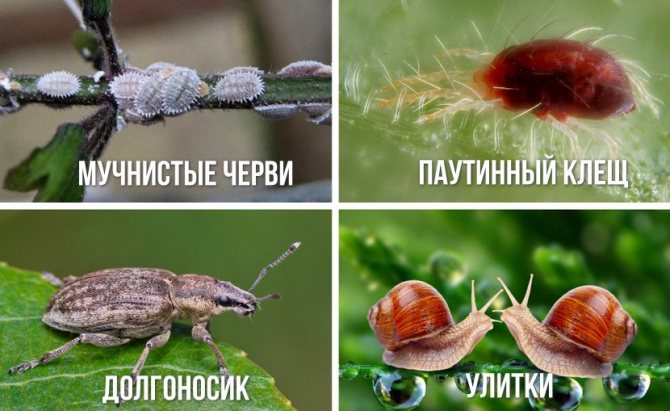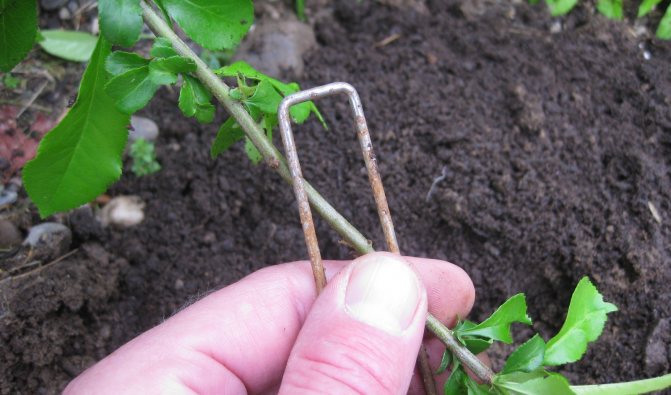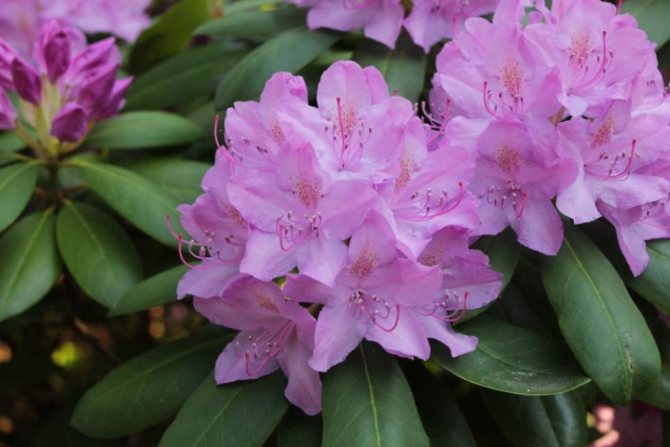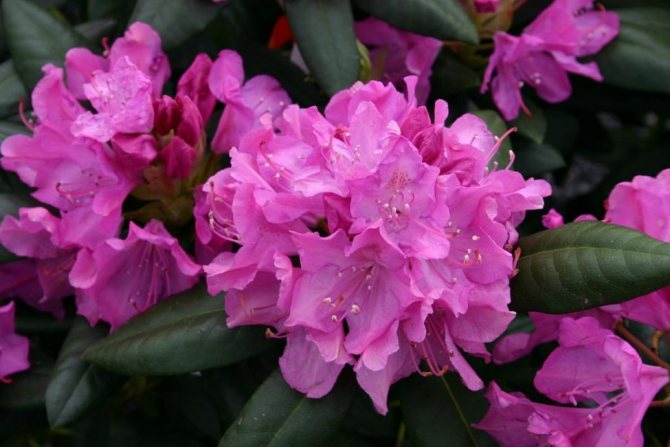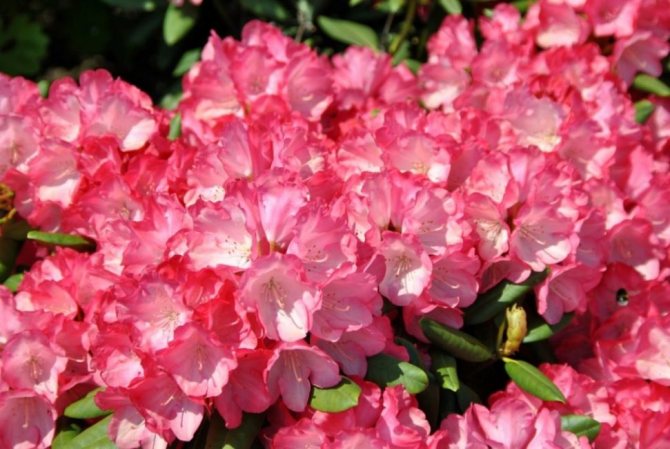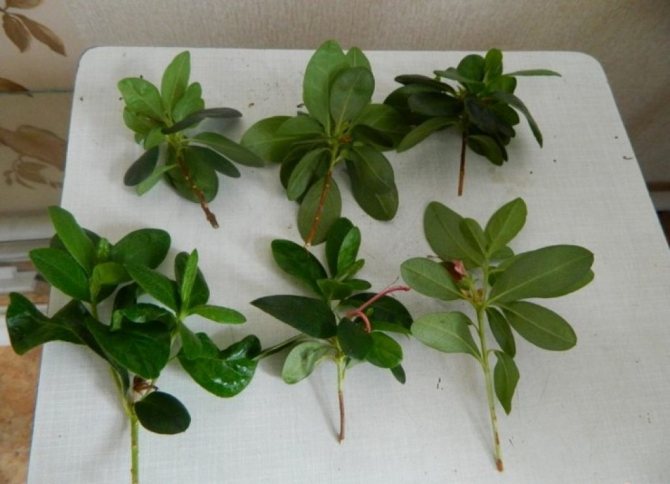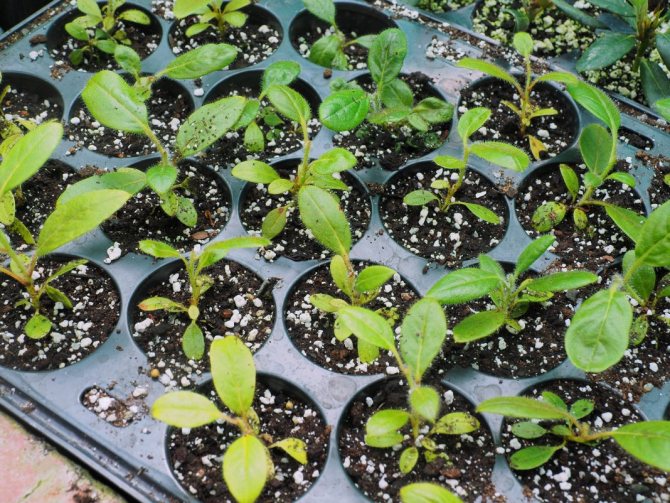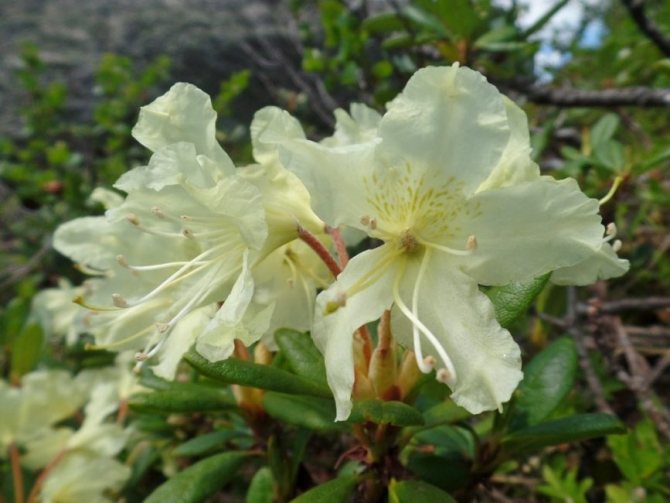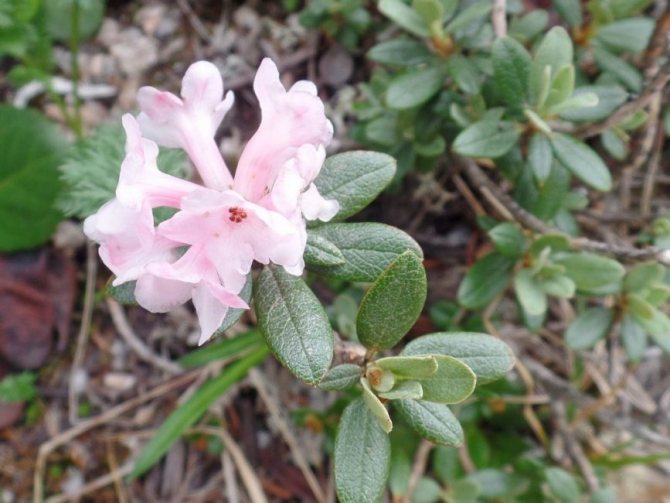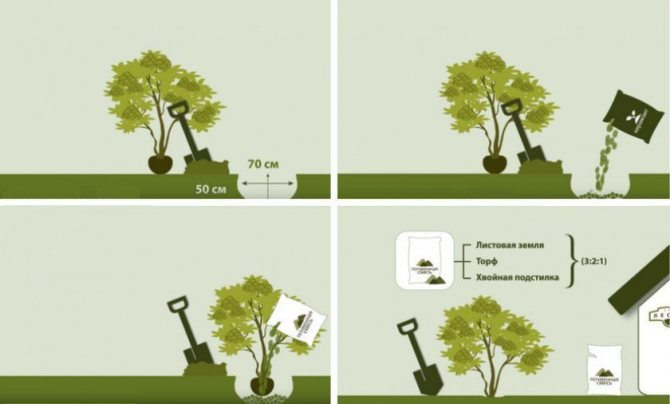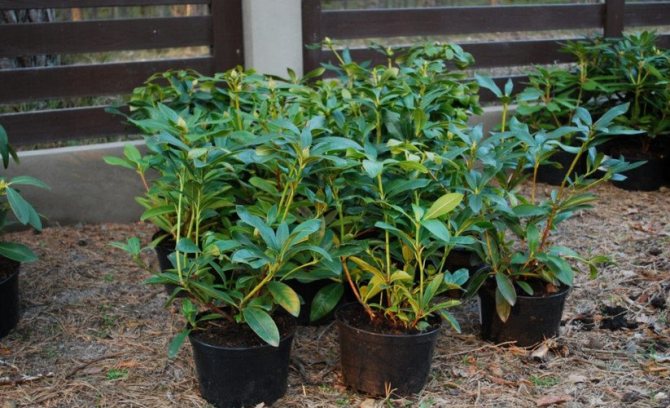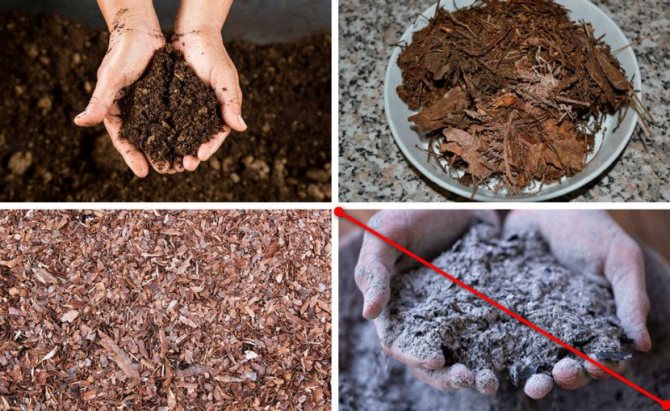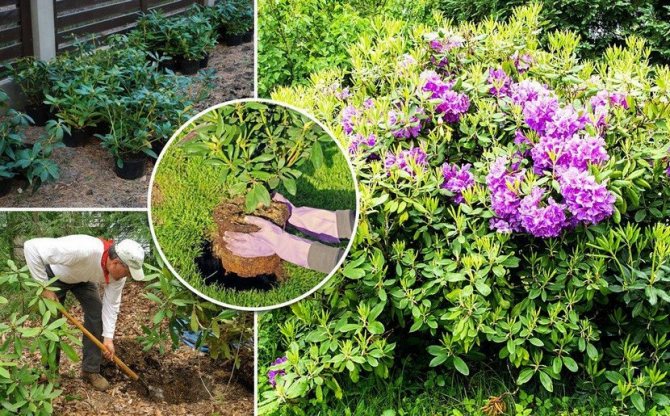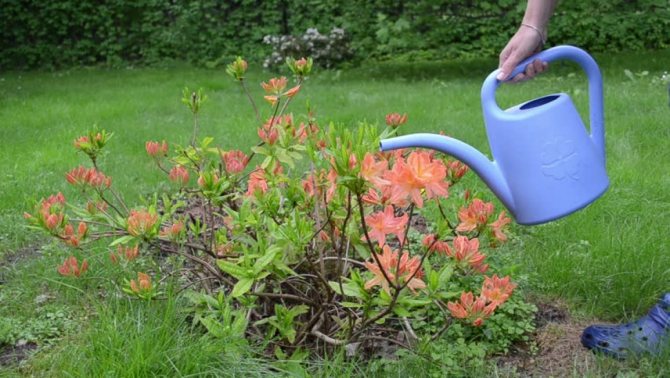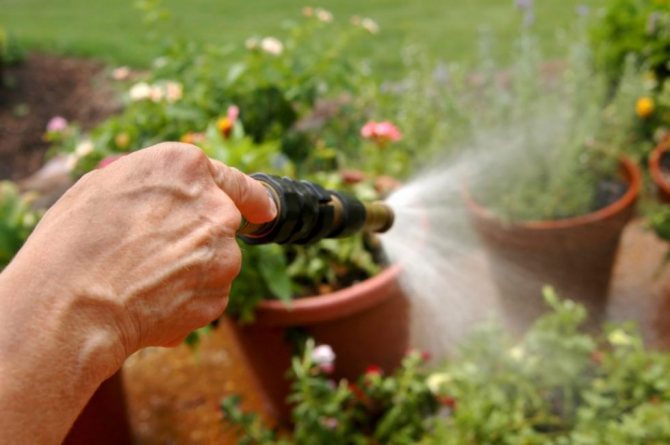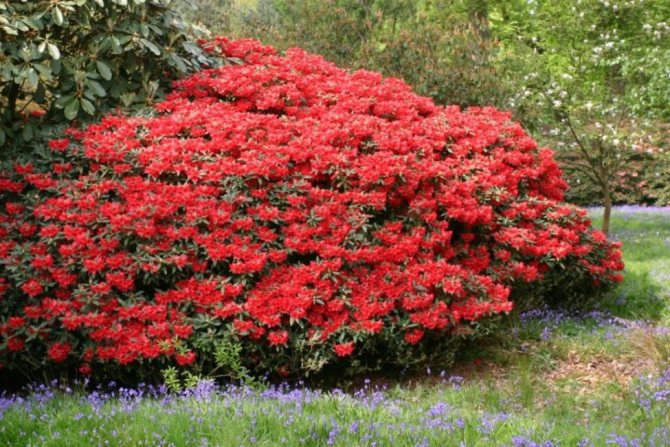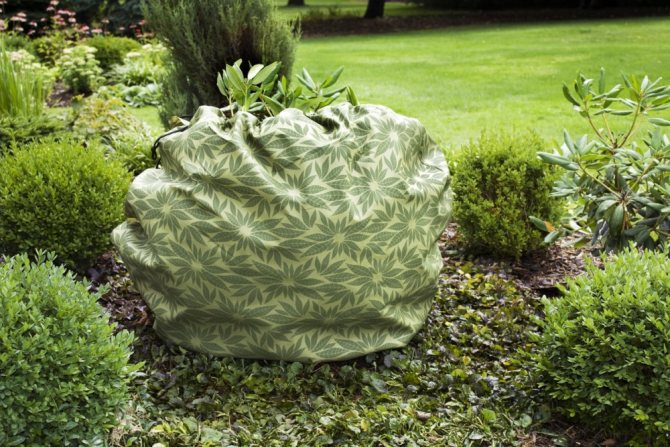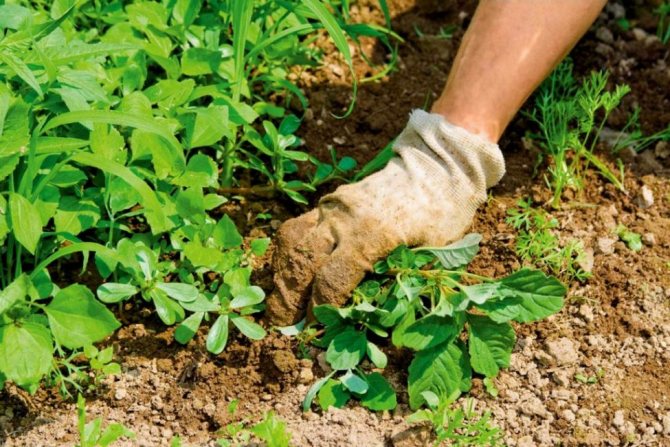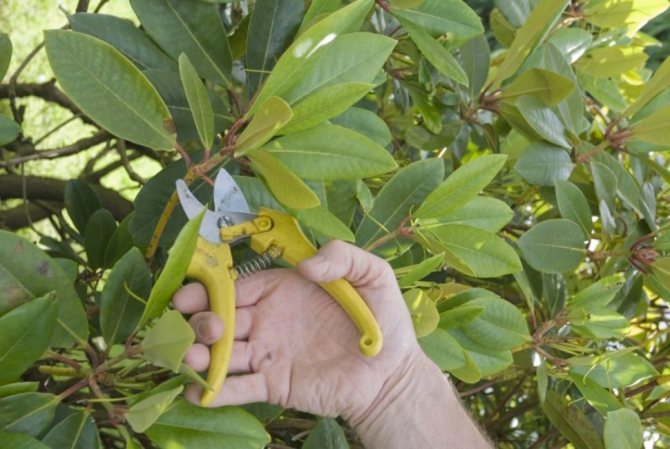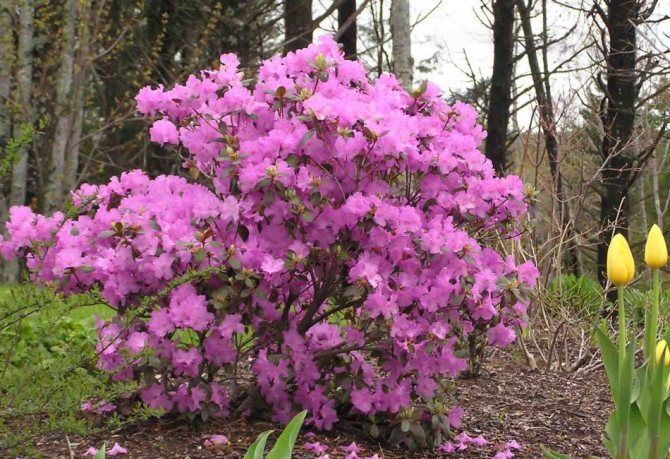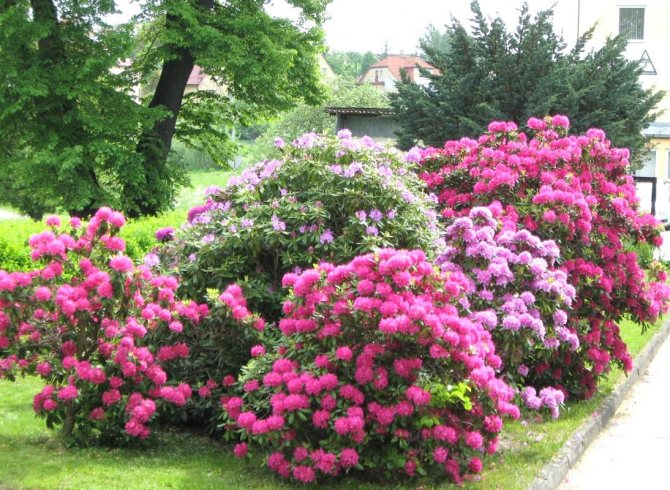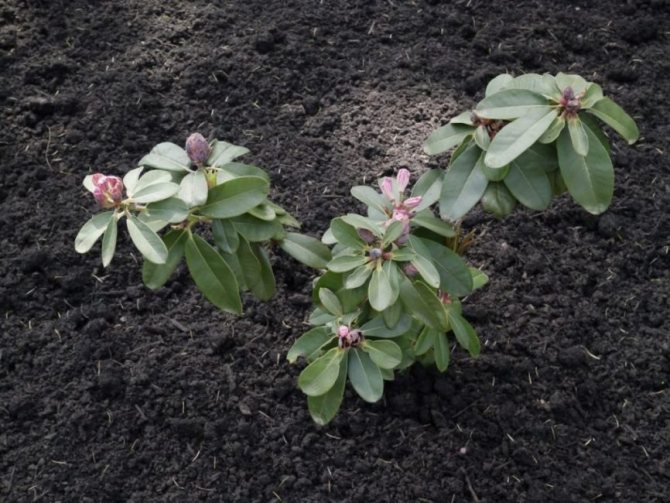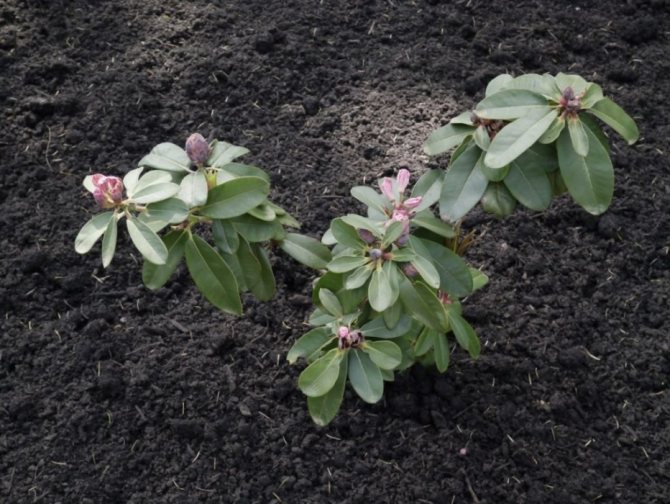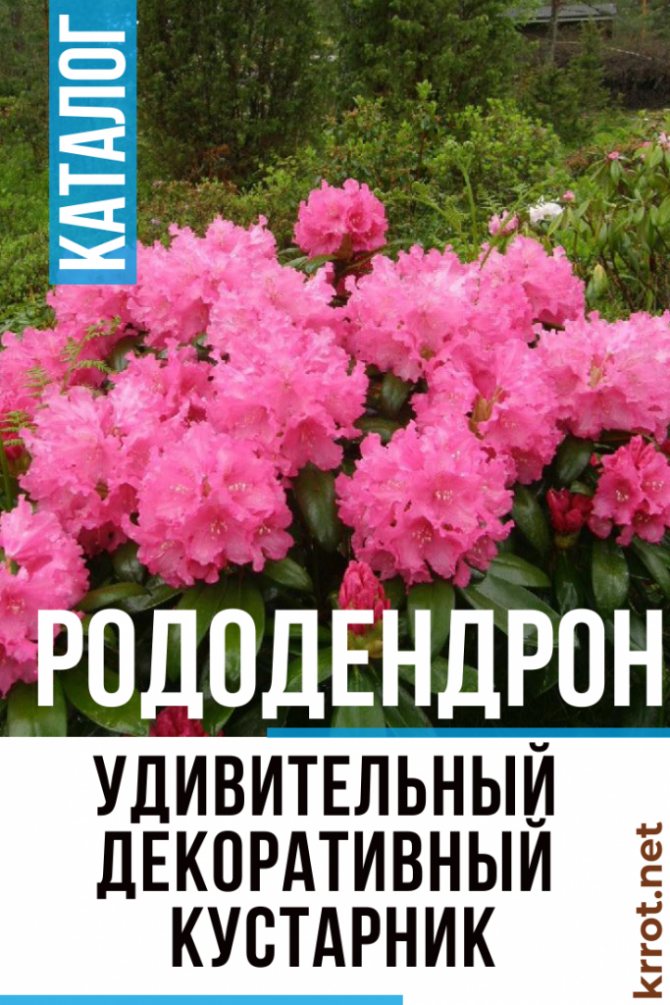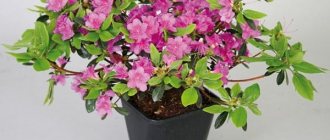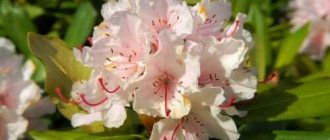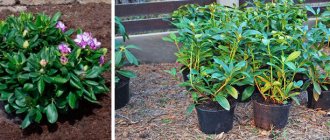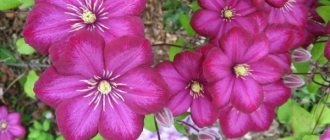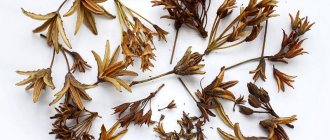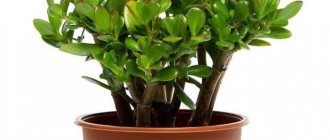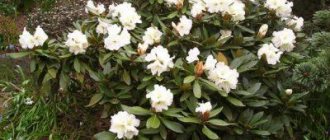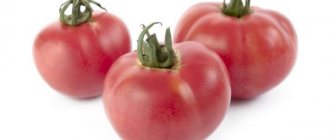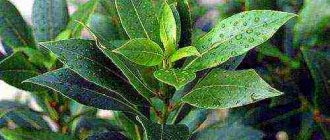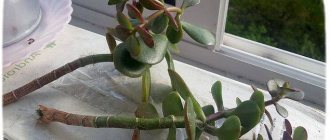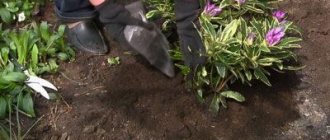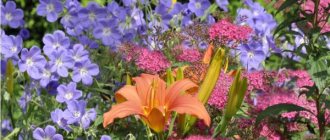There are plants, once seeing which, a person certainly wants to plant such a miracle in his garden. A Ural gardener, looking at a photo with a colorful rhododendron, might think that this plant can be grown exclusively in the south. However, this is not so: the rhododendron will overwinter, and it will bloom no worse than in the photo. You just need to properly care for the plant, fertilize and choose a frost-resistant variety. The article will tell you how to choose a rhododendron, propagate and protect against diseases.
Description of rhododendrons
Rhododendron grows in the form of a small shrub, densely covered with buds. From the outside, this is very reminiscent of a rose. It spread throughout the world from East Asia, China and the United States. Now it can be found everywhere, since some species of this beautiful flower have managed to adapt to the local climate.
They are different:
- Shrubs.
- Trees.
- Room.
- Evergreen.
- Semi-evergreen.
- Deciduous.
- Erect.
- Creeping.
- Creeping.
Depending on the variety, they have the following inflorescences:
- Tubular.
- Funnel-like.
- Bell-shaped.
- Wheeled.
Even the leaves have different shapes, some of them, depending on the growing climate, do not fall off every year.
This plant is very demanding, in order for it to successfully take root in your region, you need to know the required composition of the soil, the rules for caring for the flower.
Diseases and pests
Rhododendron, with proper agricultural technology, almost does not get sick. Severe waterlogging, unsuitable soil acidity, sunburn and dryness in winter are unfavorable factors for the plant. Fungal diseases can be stopped with fungicides. To destroy snails and slugs by hand, but against spider mites, scale insects, rhododendron bugs and flies, mealybugs and weevils, spraying with an insecticide will help. During flowering, insecticidal preparations should not be used, so as not to harm bees and pollinating insects.
Winter care for rhododendron: video
Growing rhododendron in cold climates: photo
Sapling selection
In order for a seedling to take root in the Urals and Siberia, its choice must be approached very responsibly. In order not to suffer with shrubs later, do not buy them from your hands, but only in specialized stores, where they will certainly advise you on how to properly care for the selected variety. Then a beautiful shrub will bloom on your site for many and many years.
When buying, be sure to make sure that the root system is closed, check the top for damage, insect pests and signs of disease. If the seller sells a seedling with an open root system, then it is better not to purchase it, since the tree is most likely withered.
Varieties and varieties
Translated from Greek, rhododendron sounds like "rosewood". The Rhododendron Park in Bremen, in northern Germany, is a real paradise for fans of these colorful shrubs. There is an unmatched collection of 600 wild species of 3,250 cultivars of these plants. Unfortunately, only a few of them are suitable for growing in central Russia and the Urals. In Russia, there are 18 plant species in their natural environment.
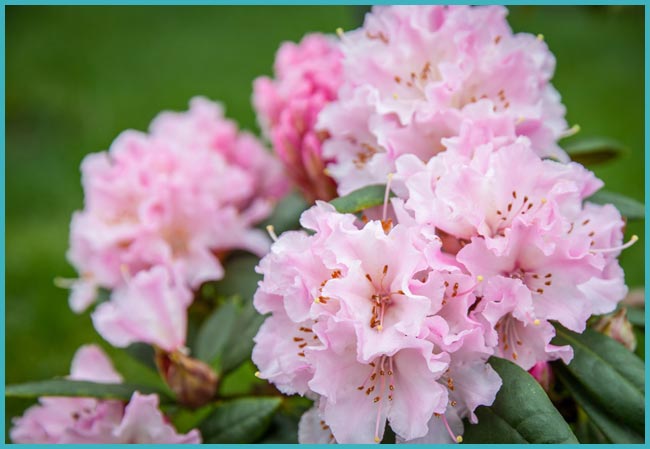
There are many varieties of rhododendron that can be grown in the Urals
Rhododenrons can be divided into several groups:
- deciduous;
- evergreen;
- semi-evergreen.
When choosing a variety for planting in the Urals, pay attention to winter hardiness - the plant must withstand a drop in temperature to 32 degrees without shelter. The rest is a matter of taste. We recommend for planting such time-tested varieties as in the photo:
- Nova Zembla.
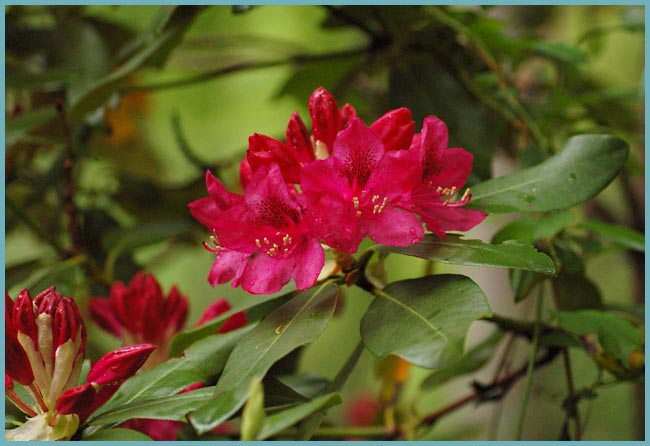

Variety Nova Zembla
- Katevbinsky Grandiflorum.
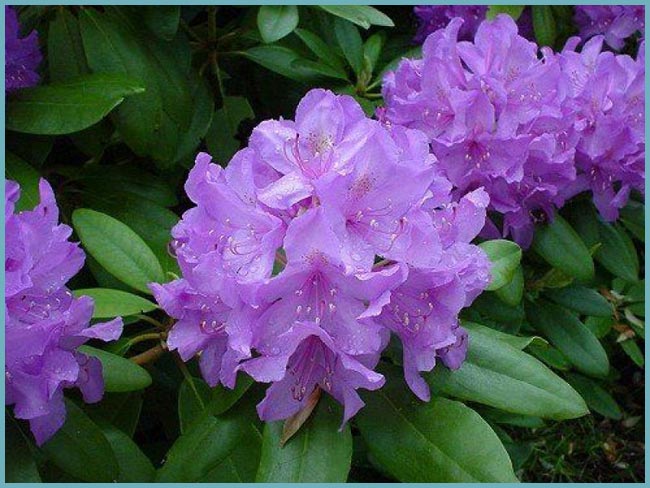

Variety Katevbinsky Grandiflorum
- Roseum Elegance.
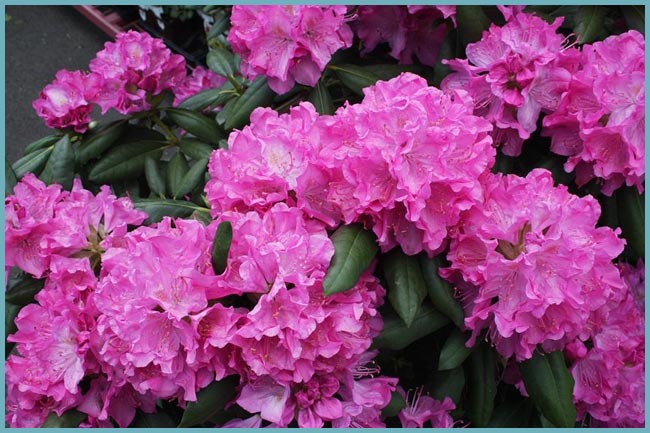

Roseum Elegance variety
Landing place
In order for the rhododendron to take root and bloom well, the planting site is carefully chosen. Since leaves and buds cannot tolerate direct sunlight, the location should be in diffused sunlight. The north side would be ideal. The bush will feel very comfortable next to tall trees that give light shade.
The main thing is that these trees do not have a superficial root system, as their roots will be confused with the roots of the rhododendron. It is undesirable to plant it in full shade, since they may stop blooming altogether. Since this plant is moisture-loving, it can be planted next to a pond, reservoir, but always in an elevated place so that its roots are not in the water all the time. Make sure the place is not ventilated.
Planting a rhododendron in the country: tips for beginners
Adding an article to a new collection
Do you want to settle a bush of an attractive and flowering plant on your site? We will tell you when and how to properly plant rhododendrons in a flower garden and take care of them after planting.
Rhododendrons are rightfully considered the most beautiful spring-flowering shrubs. They have attractive evergreen leathery leaves. And the main decoration of the bush is large inflorescences. But to enjoy this beauty, the plant must be planted in a suitable place.
Landing
But due to the changeable weather conditions in the Urals, the most optimal season for planting seedlings in open ground is spring. Mid-April is best. In this case, the tree will have time to get stronger before the frosty winter. Landing is done according to this scheme:
- Dig a hole 60 centimeters wide and 40 centimeters deep, first carefully examining the parameters of the root system. If necessary, increase the width and depth.
- The entire pit is filled to the top with peat mixed with pine needles.
- Then they dig a hole again to fit the size of the root system of the seedling.
- Any drainage is poured to the bottom of the pit.
- The tree is carefully planted in a hole, trying not to crumple the roots.
- Fall asleep with the above-described soil mixture.
- During this procedure, make sure that the root collar is level with the ground.
- Water everything well.
- Mulch the place around the trunk with needles so that the plant does not suffer from drought and frost.
Rhododendron in landscape design
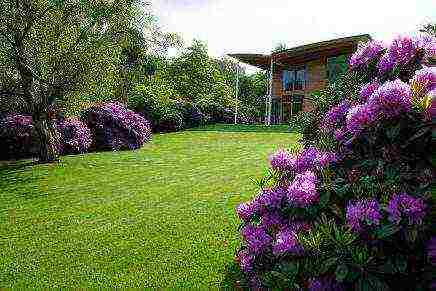

To enjoy the beautiful flowers of rhododendron for a long time, you can plant the plant in groups with different flowering periods. The best place to plant would be an area near a fountain, an artificial pond. Such reservoirs can increase the humidity around the bush, and the gardener does not have to constantly spray it.
Lingonberries, blueberries, or other lovers of acidic soil will become good neighbors for him.
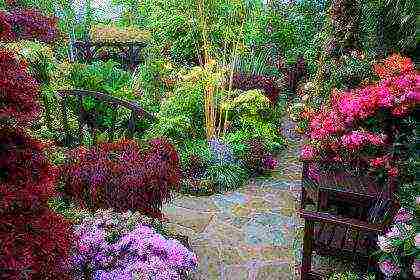

Rhododendron is for gardeners who love beauty and want to constantly care for plants. Only those whose conditions on the site fully meet the requirements of this beautiful flowering bush can not take care of the plant.
These shrubs are great during flowering. At the beginning of the 19th century, rhododendrons began to decorate the gardens of Russia for the first time. Varieties, cultivation in the open field, planting, care, reproduction: we cultivate rhododendrons according to all the rules.
Description of rhododendron: varieties and varieties
The genus of rhododendrons is quite extensive - more than 1,000 species, which include various varieties of this wonderful plant. The natural area of distribution of rhododendrons is limited to the eastern countries: China, Japan, Korea, the Himalayas; some plant species are found in the Caucasus, North America, northern Africa and Australia. In European territory, two varieties of rhododendron grow in the mountainous regions of Germany.
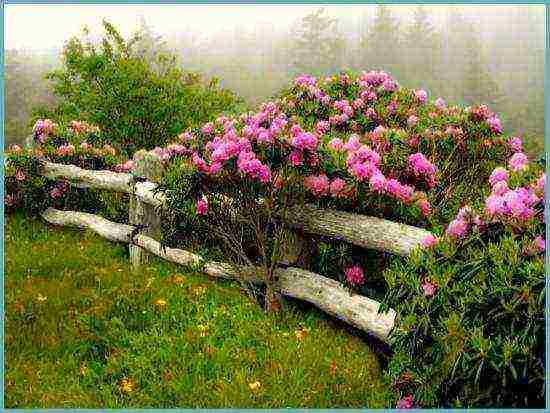

Rhododendron is a magnificent plant with a long flowering period
The culture refers to flowering deciduous or evergreen shrubs of the heather family. The branches of the plant can have smooth bark or pubescence. Leathery, dark green small ovoid leaves are sometimes pubescent. Bell-shaped flowers, funnel-shaped, simple and double. The color of the petals varies depending on the variety: white, pink, lilac, red, purple. Modern varieties of rhododendron are yellow and orange in color. Numerous small seeds ripen in capsules.
Rhododendrons, the cultivation of which on the territory of Russia is most acceptable, is limited to 26 species belonging to three groups of plants.
- Evergreens are tall shrubs that do not shed their dark leathery foliage even in winter. Large flowers are painted in different colors and tones. Growing evergreen rhododendrons in the open field requires compliance with a number of necessary rules: plants are placed in places with diffused shadow; the soil for them should include a large amount of peat.
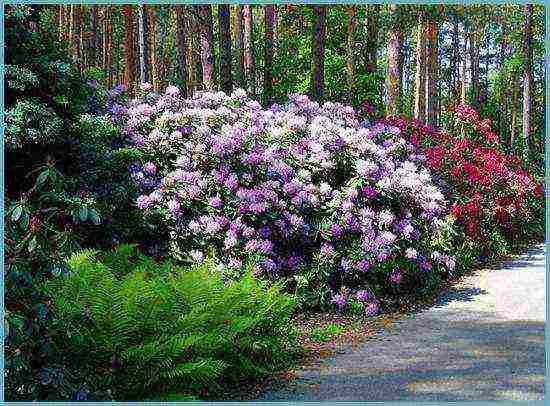

Rhododendron evergreen
Tip: It is important to choose the right neighborhood for evergreen species of rhododendron, especially when decorating territories in landscape design. It can be all types of conifers, heather, ferns grown in the open field.
- Intermediate (semi-evergreen) - low shrubs that winter well under a layer of snow. The plant is characterized by a compact form, a huge number of flowers during the flowering period. In winter, most of the leathery leaves fall off, leaving only the whorl of leaves at the ends of the branches, from the center of which new foliage grows.
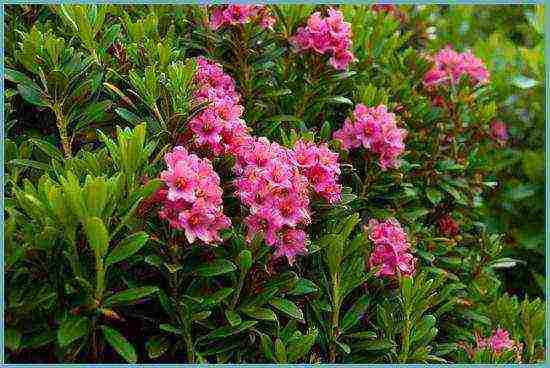

Semi-evergreen rhododendron
- Deciduous - rhododendrons of this group are most adapted to the conditions of the Russian climate. The cultivation of these plants is not difficult, and the plants themselves do not need to be specially adapted in winter. Blossoming in spring, repeated in autumn.
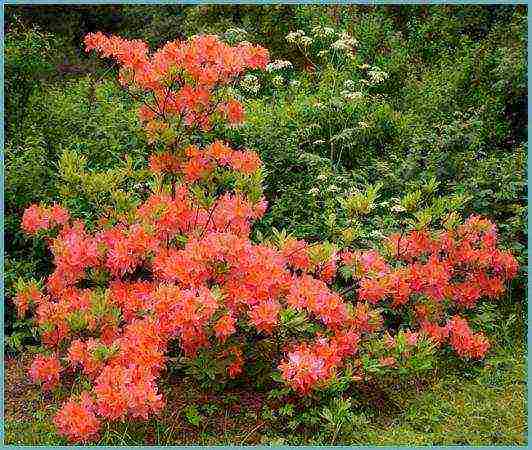

Deciduous rhododendron, grade "Fireworks"
Planting a plant
Rhododendron: planting and caring for plants in compliance with agrotechnical rules - plant transplantation is allowed in spring and autumn. In autumn - in any of three months, in spring - in warm, well-established weather, when the soil is no longer frozen (usually April or May).
The choice of a place for planting a plant must be carried out with special care. Planting rhododendrons should be protected from the prevailing wind and direct sunlight. It is important that the shrub is accessible for viewing, then the decorative appearance of the plant during the flowering period will decorate the territory and please the eye.
Tip: Before planting the plant from the container into the open ground, it should be thoroughly saturated with water.
A planting hole for rhododendron bushes is prepared based on the actual size of the root system, and should be 2 times larger in volume. The natural soil should be removed completely. To plant a plant, it is required to prepare a special earthen soil consisting in equal parts of heather soil; peat; garden soil or leaf humus; rotted manure; needles (pine).
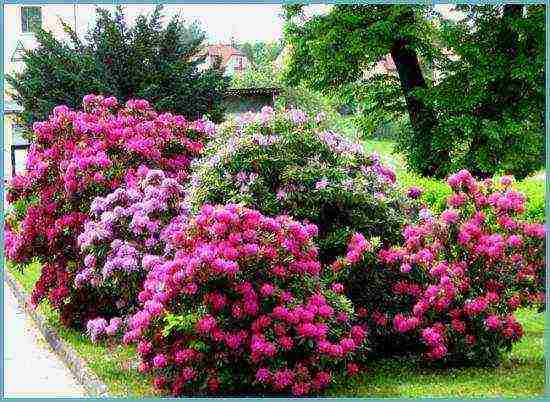

It is very important to plant the plant correctly, then it will quickly take root.
The prepared pit is filled with a mixture, a place is prepared in it for planting a rhododendron bush, which must be placed strictly vertically.The soil around the root system of the plant must be tightly squeezed - the formation of voids and "pockets" in the planting soil is not allowed. At a high level of groundwater, it is necessary to provide for the laying of a special drainage layer at the bottom of the pit. After planting, the top layer of soil should be mulched with peat chips.
Top dressing
The flower is fed twice for the whole year:
- Spring - Add nitrogen based fertilizers.
- Summer - Superphosphate is added immediately after flowering.
For convenience, in a gardening store, you can purchase special fertilizers for this plant, which are used strictly according to the instructions. In late summer and autumn, the shrub is not fertilized so that it begins to prepare for winter, and does not grow new shoots. Every three years, the top layer of the soil is very carefully removed, being careful not to touch the roots. Then a new layer of cow dung mixed with peat is poured on top.
Rhododendron care, fertilization and feeding
If the planting site is chosen correctly, the soil is meticulously prepared and the plant is mulched, then the care of the rhododendron is minimal.
The first time a rhododendron is fertilized after planting. The ideal top dressing is specially selected fertilizers for rhododendrons. Spread the fertilizer evenly over the soil and water the seedling well. If the plant is planted in the fall, do not feed it, but wait until spring. Then water the bush well.
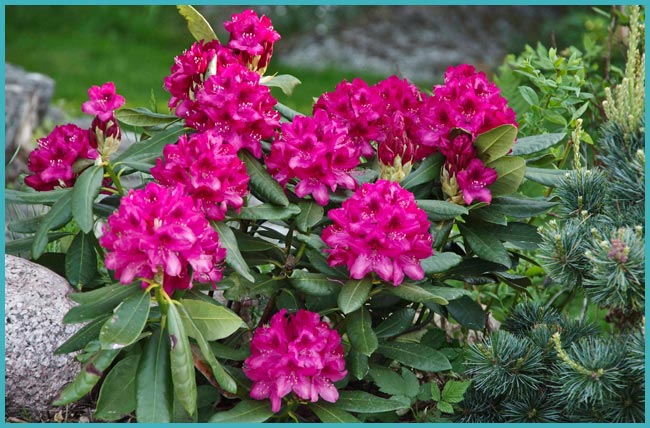

Follow the rules for feeding rhododendrons
In the spring, rhododendron is fed with a complex fertilizer for azaleas, the second time, after flowering, phosphorus and potash fertilizers are applied. At the end of summer, rhododendrons do not feed anything, as this can provoke the growth of shoots that do not have time to ripen by the cold and freeze in winter.
Water the rhododendrons regularly a couple of times a week. During flowering, plants are watered more often. Rhododendrons do not like dry hot air and respond well to spraying. The first sign of a lack of water is drooping leaves and the appearance of brown spots along the edge of the leaf plate, similar to fungal diseases. In late autumn, it is necessary to do water-charging watering - this will improve the overwintering of the plant.
To maintain the acidity of the soil, water for irrigation is acidified with colloidal sulfur, citric or oxalic acids.
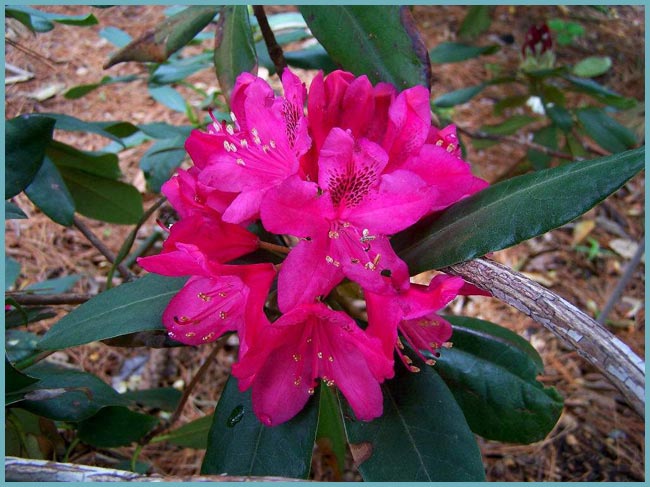

Rhododendron responds well to soil mulching
It is not recommended to loosen the ground and weed, so as not to injure the roots of the rhododendron close to the surface. Use a thick layer of mulch and remove weeds by hand.
Removing faded inflorescences allows you to redirect the strength of the plant from the formation of seeds to the laying of buds and ripening of shoots. Young bushes, devoid of inflorescences, branch well and grow in width.
Blooming of the next year depends on successful overwintering. Small frosts up to ten degrees are not dangerous for the plant. It is important to guess with the timing of when to start insulation. Cover it early - the rhododendron will support you. Do not open the plant in March - the root system has not yet thawed and does not absorb water. It is best to do this gradually, leaving some of the spruce branches to protect against sunburn.
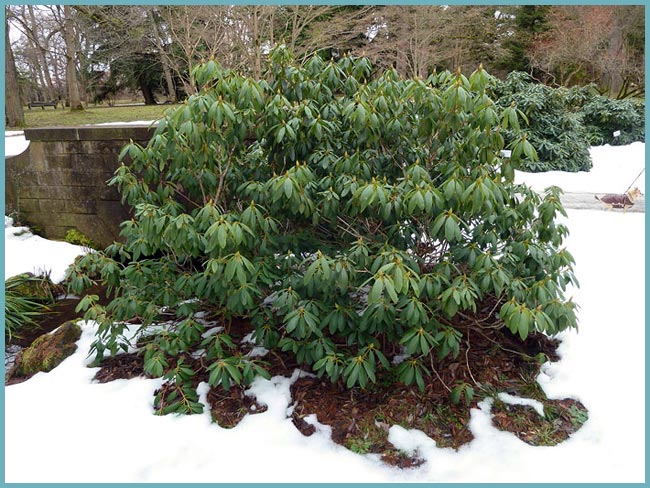

Rhododendron in winter
Deciduous rhododendrons hibernate better than evergreens, it is enough to bend them to the ground and cover them with foliage and spruce branches. Evergreens require protection from the sun and wind, they do not so much freeze as they suffer from the drying wind.
The root system of the plant is insulated in the first turn: peat, foliage is poured and covered with spruce branches. A frame is being built on which roofing material, paper or agrofibre is pulled.
Advice. When watering, you need to know when to stop: a large amount of water washes away nutrients and leads to decay of the roots, and if there is insufficient watering, the bushes dry up and wither.
Shelter for the winter
Since the winter in the northern region is very harsh, even frost-resistant varieties of flowering shrubs may not tolerate it. Therefore, every autumn they must be covered for the winter. This should be done as soon as the temperature has dropped to zero.
First, the root system around the trunk is mulched with peat or covering material. Then the entire crown is collected and carefully bent to the ground. Wrapped in burlap or covering material. It is recommended to remove the shelter in the Urals not earlier than in mid-April, when the weather is already warm.
Varieties for growing in the Urals
The genus Rhododendron has approximately 1,300 varieties. This includes mainly shrubs, and sometimes trees up to 30 m in height and plants creeping along the ground. They are evergreen, deciduous and semi-deciduous. They differ in the shape of leaves (ovate and obovate), flowers (tubular, funnel-shaped, bell-shaped) and their colors. But when choosing a variety for growing in the Urals, the most important criterion should be its frost resistance - not lower than -32 ° C.
Did you know? The high mountains are a favorite place of residence for rhododendrons. They grow and bloom even at an altitude of 6 thousand meters above sea level and above.
The following are the most trusted representatives of the cold-resistant:
- Mandarin Lights, Lemon Lights, Golden Ligths - very frost-resistant varieties (up to -40 ° С), deciduous shrubs of almost round shape, foliage glossy or slightly pubescent, at first olive green, and in autumn - burgundy, in spherical inflorescences of 10-15 buds, simple or semi-double, of different colors : white, light yellow, pink, orange, salmon red;
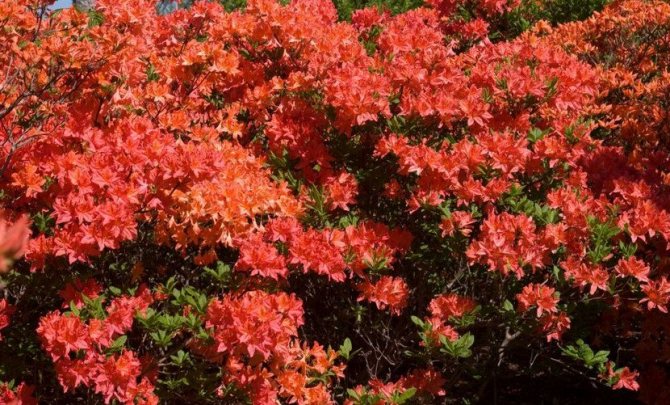

- Helsinki University - evergreen spherical bush (up to 1.5 m), frost resistance - -39 ° С, in the hands of 12-15 large buds (6-7 cm) pink, orange inside, with burgundy blotches;
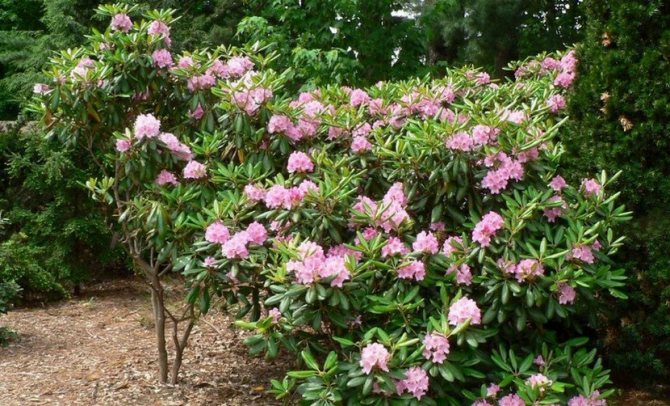

- Peter tigerstedt - evergreen bush (2 m) with large white funnel-shaped flowers;
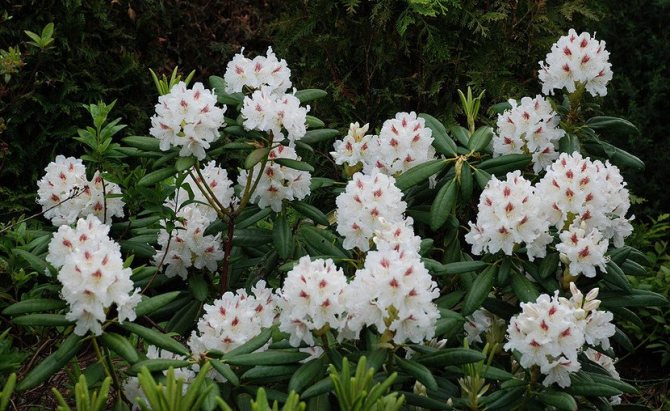

- Calsap - a low bush (up to 1.5 m) with large white buds with a rose;
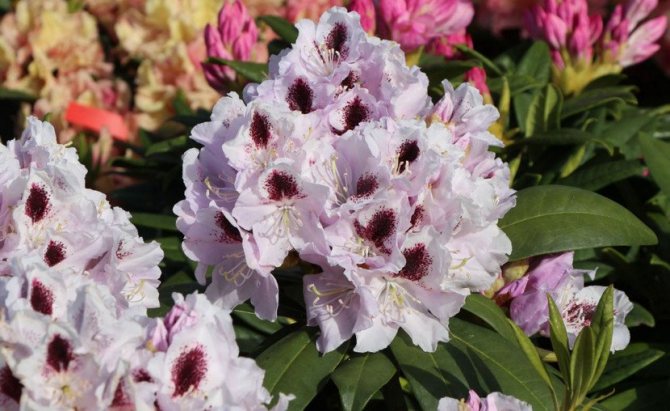

- Haaga - branched spherical bush, green leaves with orange blotches, large flowers, bright pink, bloom in June – July;
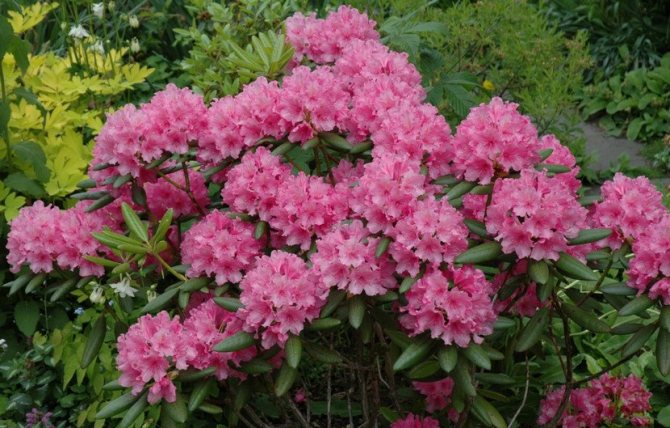

- Mauritz - frost-resistant hybrid (up to -30 ° С), dense crown, strongly branching, dark green foliage, red-cherry inflorescences.
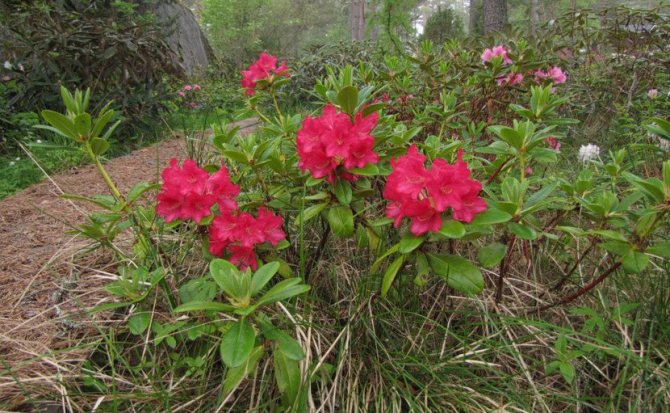

Reproduction methods
In the Urals, rhododendron can be propagated in one of three ways. Which method to choose depends on its variety. Since there are varieties that are easily propagated by cuttings, other varieties can be grown from seeds.
Seed reproduction
This is the longest and most difficult way. Get ready to see the first flowering in at least eight years.
- The seeds of the desired variety are purchased from the store. It is undesirable to buy them from hands, otherwise a completely different plant will grow. And all the work will be wasted.
- Prepare a small pot.
- Fill it with peat and sand (3: 1).
- Moisten the soil well.
- Sow the seeds at least 3 centimeters apart.
- Cover these seeds with sand.
- For a microclimate, cover the pot with plastic wrap.
- Place the pot in a bright place, but not in direct sunlight.
- Open the plastic wrap for a few minutes every day for a month and moisten the soil as needed.
- If everything is done correctly, then in 30 days the first shoots will hatch.
- As soon as more than 3 true leaves grow on the sprouts, they are transplanted into separate pots.
- They can be transplanted to open soil only after two years, when they are sufficiently strong.
Cuttings
This method is somewhat easier than seed.
- This breeding method is carried out only in early spring, before the first buds appear.
- A suitable woody shoot is looked after on a suitable mother bush.
- A stalk about 10 centimeters long is cut from it.
- Its lower part is cut off from the branches, placed in a solution for 24 hours, which accelerates the growth of roots.
- A small pot is filled with peat and sand (3: 1).
- The stalk is rooted in the middle of the pot.
- Cover the top with a jar or cut-necked plastic bottle.
- Further, depending on the type of plant, root formation is expected.
- After the roots have grown, in the fall or late summer, the cutting is transplanted into a large pot of peat and pine needles.
- For the winter, the pot with it is moved to a cool place, where the temperature is kept at 12 ° C.
- In the spring, it is planted in open soil. If this place is not quite suitable for the bush, then it can be transplanted to a permanent place after two years. It is undesirable to transplant it anymore.
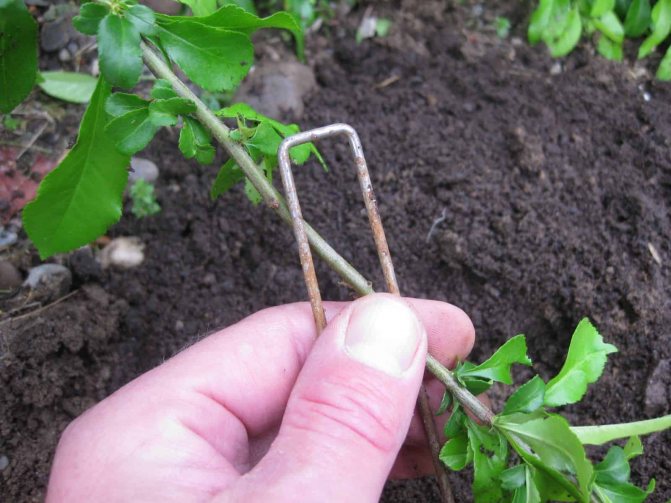

Reproduction by layering
Even a beginner can handle this method.
- Reproduction by layering is carried out in the spring immediately after the snow has melted and the last frosts have passed. Since the earth must be warm and soft.
- Then choose the lowest shoot and bend it to the ground. It is desirable that this shoot be young and flexible.
- A small incision is made in the bark of this shoot.
- This shoot is fixed to the ground with a large and strong hairpin, which can be made from wire.
- This part of the shoot is buried in peat so that the top with the buds is above the ground.
- Water everything well.
- This layer can be cut off from the bush only after a year, when it has already taken root.
Outdoor care
Subject to planting technology, caring for a rhododendron in the Urals is no more difficult than in other regions. The difference is that you need to cover the plants more thoroughly for the winter. Routine maintenance activities include watering and fertilizing, mulching, pruning, and protecting against diseases and pests. These processes are described in more detail below.
We suggest that you familiarize yourself with the features of planting rhododendron in the Leningrad region.
Watering
The soil under the moisture-loving rhododendron should always be moderately moist. If the plant is thirsty, then the leaves are drooping, and brown spots appear on them. The regularity of watering is twice a week, and more often during the budding and flowering period. The rosewood receives moisture not only from the soil, but also from the air. Therefore, in a dry hot summer, you need to add spraying to the crown of the bush.
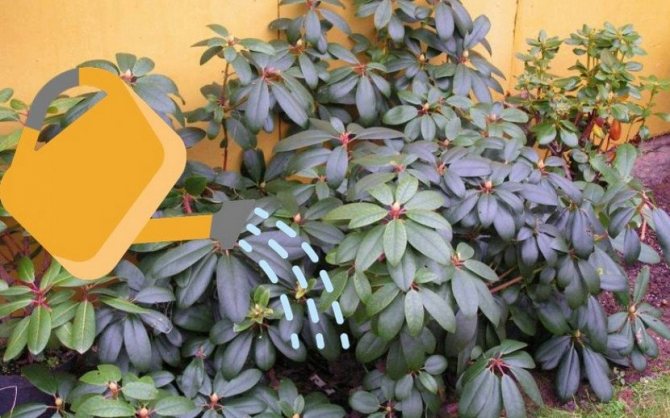

Water for irrigation and spraying should be soft. This means that tap water is not suitable for this purpose. It is advisable to collect rainwater, river water is also suitable. A good effect is produced by adding citric, oxalic acid or colloidal sulfur to irrigation water. This is an easy way to keep the soil acidic.
Top dressing, fertilization
You need to fertilize rhododendron from the first year of planting. Top dressing is applied twice per season:
- in the spring - nitrogen fertilizers (ammonium sulfate, ammonium nitrate) or complex formulations;
- during or after flowering in the first half of summer - phosphorus-potassium fertilizers or special preparations for rhododendrons, azaleas and flowering shrubs.


The plant responds well to liquid feeding. But you can also use dry granules: pour them under the bush (dosage according to instructions) and pour water immediately.
Important! Starting in the second half of summer, it is not necessary to fertilize pink trees so that they do not grow before wintering.
Pruning
Pruning is done twice:
- in early spring, before the start of sap flow - sanitary removal of dry, broken, sick and frozen branches, as well as pruning the tops of shoots thicker than 1 cm, so that a lush crown is formed;
- in the summer, after the end of flowering - breaking off the peduncles in order to facilitate the laying of flower buds of the next year.
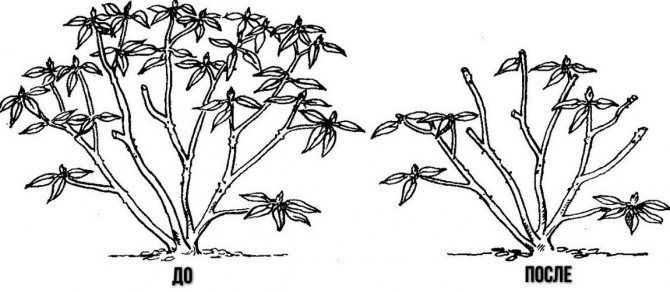

Sections should be disinfected with oil paint, garden varnish, or resin.
Loosening and mulching
Loosening should be excluded from regular maintenance activities so as not to damage the superficial roots of the bushes. Better to replace it with mulching. A layer of dry peat, pine bark or pine needles will keep moisture at the roots. Mulching will also prevent the formation of an earth crust and inhibit the growth of weeds.
Here you can read about the cultivation of rhododendrons in Siberia.
Diseases and pests
With mistakes in care, low acidity of the soil and its increased density, the plant becomes vulnerable to fungal infections: rust, chlorosis and leaf spot. Prevention of these diseases is spring and autumn spraying with Bordeaux liquid. If the shrub still gets sick, then the affected areas will need to be urgently removed, and the plant should be treated with fungicidal agents.
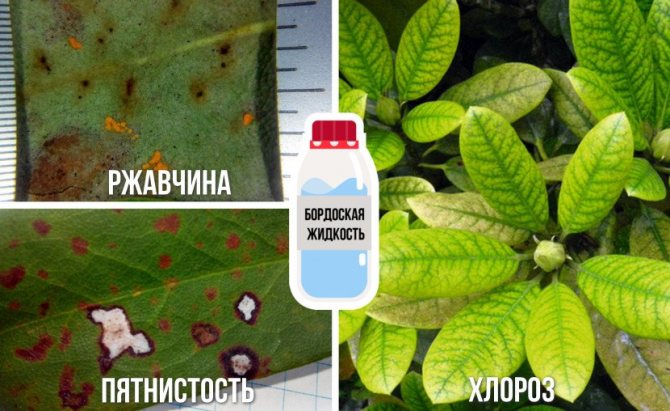

Pests affecting rhododendrons:
- rhododendron flies, mealy worms and scale insects - must be treated with insecticides;
- bugs, weevils, spider mites - spraying with acaricides will help;
- slugs and snails - removed by hand.
